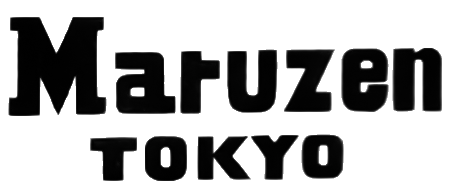Maruzen Athena Pens with Sheaffer Triumph Style Nibs c. 1950-1952
by Jim Mamoulides, April 12, 2024
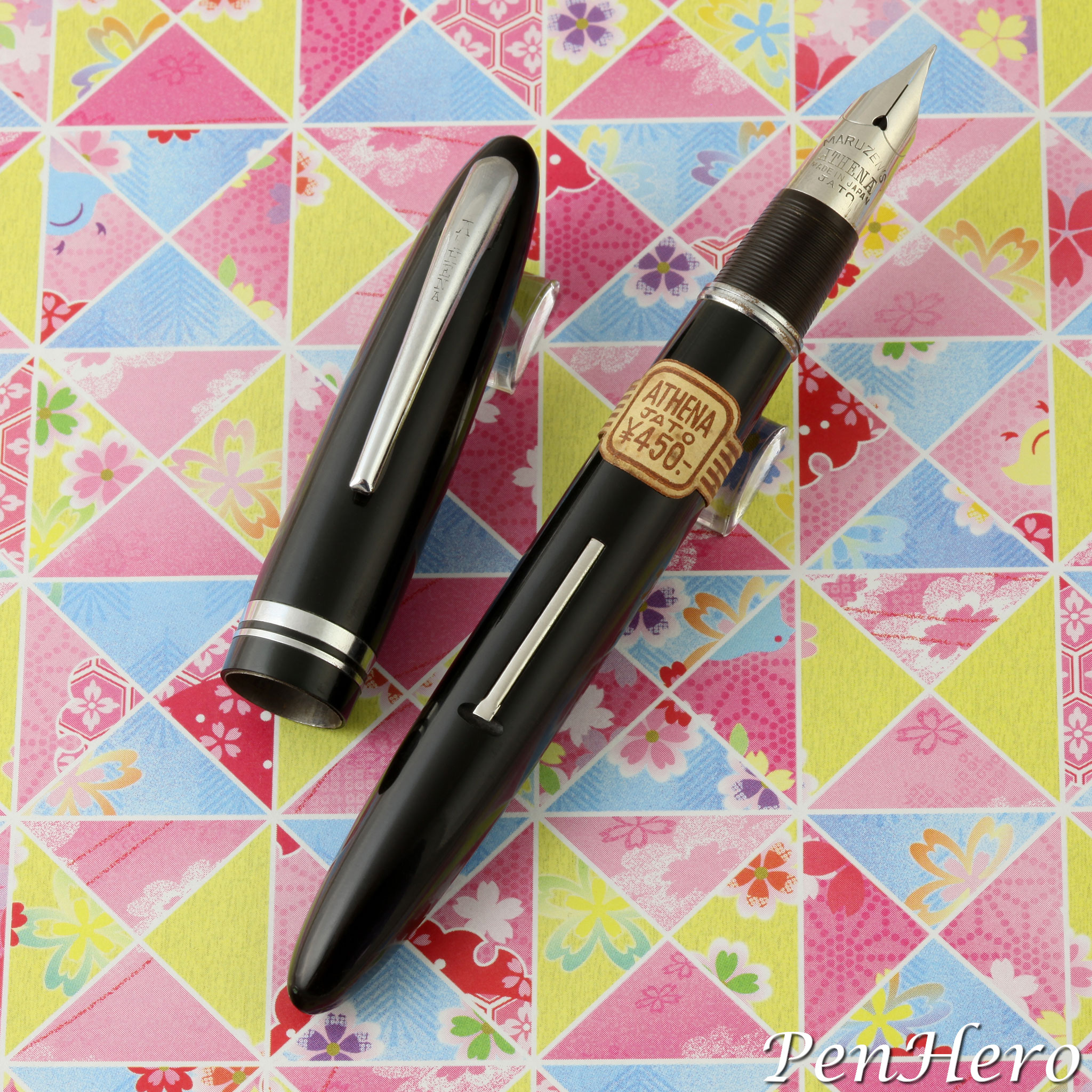 Maruzen Athena "Balance Shape," large size in black c. 1950-52
Maruzen Athena "Balance Shape," large size in black c. 1950-52
A Japanese Triumph
The story of Maruzen begins with Yuteki Hayashi who was born September 8, 1837 in Gifu, Japan, a city north of Nagoya. His father was a doctor, but he was later adopted by one of his mother’s relatives. He learned Dutch and English, possibly because of the national impact of American naval officer Matthew Perry’s expedition to reopen western trade with Japan in 1853. Perry arrived at Uraga at the entrance to Edo Bay near Tokyo. In 1868, inspired by educator Fukuzawa Yukichi, who advocated for Japan to learn Western culture, Yuteki Hayashi opened his first bookstore, founded as Maruya Trading Company, in Yokohama, Japan, and began selling imported foreign books and translating foreign works into Japanese. In 1869, the second year of the Meiji Restoration, the year after the capital of Japan moved from Kyoto to Tokyo, he moved the business to Nihonbashi, Tokyo.
According to Maruzen-Yushodo corporate history, Maruya Trading Company, Ltd. was the first corporation established in Japan. On January 1, 1869, the company was organized as owned by investors and operated with employees, as opposed to the traditional hereditary system typical of Japanese businesses. The company also takes credit for importing fountain pens to Japan “around 1884,” and attributing the first usage of the name “fountain pen” to describe them to a Maruzen salesclerk named Yoshikazu Yazawa. Those first pens were stylographic type and branded Mokichi. Maruzen began importing De La Rue Onoto fountain pens from England in 1907, by 1911 added pens from Waterman, and by 1915 inks from Carter and Steuber.
Maruzen’s most famous pen brand was Athena, and the first Athena fountain pen was a lever-filler similar to a Waterman 52 and introduced in 1915. The brand was inspired by the Greek goddess Athena (Minerva), the goddess of knowledge, wisdom, craft, and warfare, an appropriate choice for a bookseller’s pen line. According to Fountain Pens of Japan, by Andreas Lambrou and Masamichi Sunami, the first Athena pens were made for Maruzen by Eisaburo Sakasai. The line became so popular that by 1925, Sakasai’s entire production was Athena pens. When Sakasai died in 1937, Maruzen bought his factory and began making the pens in house.
After World War II, Maruzen began to rebuild and by 1950 was making new pens, notable for their marble and pearlized celluloids. According to Fountain Pens of Japan, at this time they began using acid-free stainless steel nibs made by Kawakami-Seisakusho. By 1953, the company resumed using 14 karat gold nibs. Maruzen made Athena pens in house until the late 1960s and since then Maruzen has contracted other pen makers such as Sailor to make limited runs of special edition pens using the Athena name.
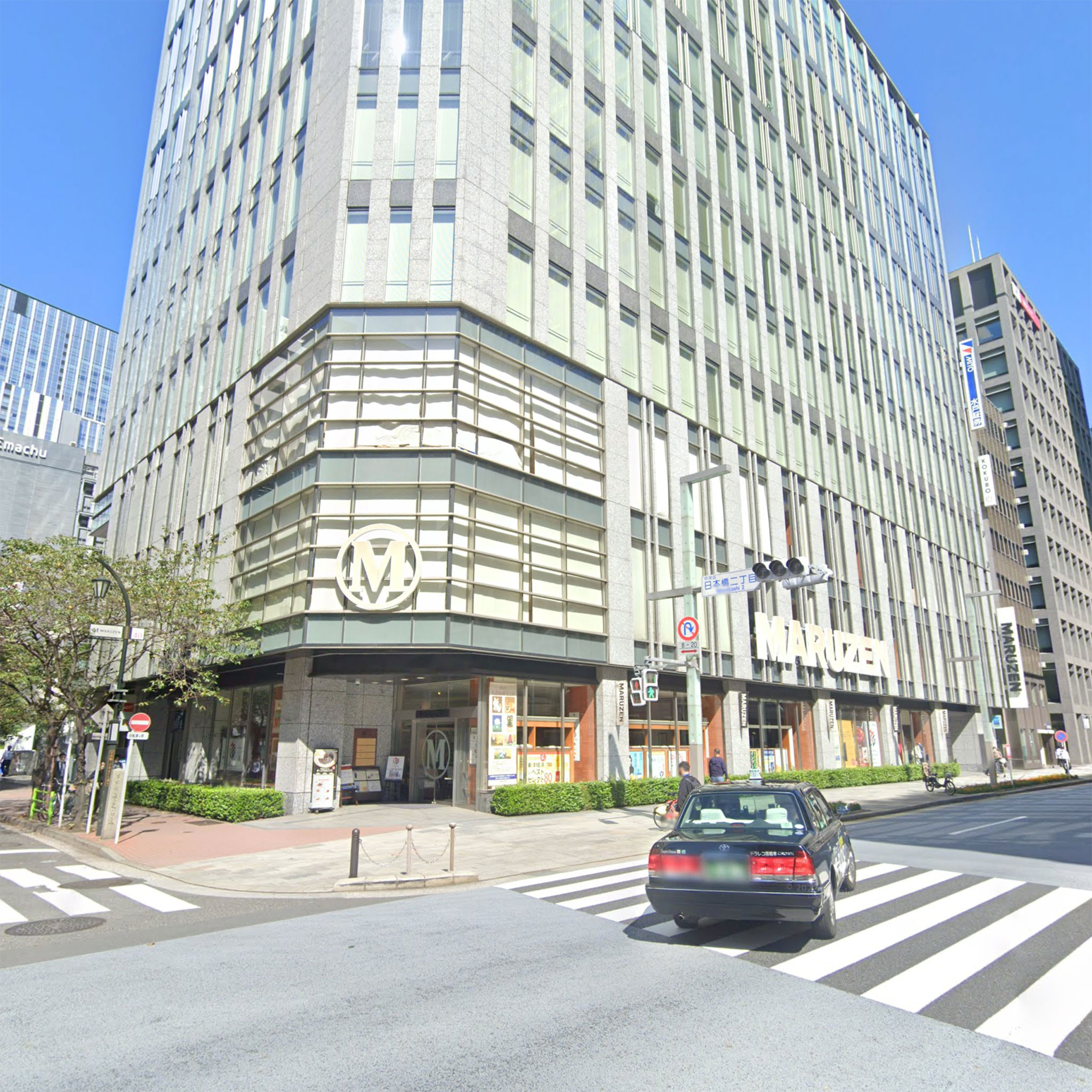 Maruzen Nihonbashi Tokyo store, Google Street View
Maruzen Nihonbashi Tokyo store, Google Street View
In 2016, Maruzen Company, Ltd. merged with Yushodo Bookstore Company, Ltd., a company with a background in the used book market, becoming Maruzen Yushodo Company, Ltd. Today the company has 15 locations, over 2,600 employees, and sells over 4.8 million books a year.
Maruzen's founder, Yuteki Hayashi, is also given credit as the creator of Hayashi rice, a popular stew on rice dish in Japan, composed of sliced beef, mushrooms, and onions cooked in a tomato-based broth and served with rice. In his lifetime the dish would have been considered “western style,” but is considered “comfort food” in Japan. It’s served at the Maruzen Café inside the Maruzen Nihonbashi store in Tokyo where a sign declares the dish’s history.
Two Styles, Two Sizes
These post World War II Athena pens are examples of Maruzen’s return to making quality pens. One line is clearly inspired by mid 1940s Sheaffer Triumph fountain pens to the degree that they have a similar conical nib, ribbed nib section, and balance shape. They look like Japanese Sheaffer pens in the same way that many other companies copied Parker 51s. The second Athena line has a cap and barrel shape and style more like the 1940s Parker Duofold, though without the striped plastic. Removing the cap reveals the same Sheaffer Triumph style nib and section as on the balance shape pens. Since I don’t know the model names because I’ve found no primary information on these particular Maruzen pens, I’m going to refer to them an “Balance Shape” and “Tapered Shape.”
Americans in the military and support services after World War II certainly brought their American made pens and pencils with them and they must have made an impression on Japanese pen companies. There are many examples of 1950s Japanese pens with design cues from not only Sheaffer and Parker models, but also Eversharp and Waterman. I have no doubt Maruzen, especially as a company interested in foreign books and culture, would have an interest to make pens inspired by popular American brands.
The caps and barrels appear to be made from celluloid and in some cases, resin, in a variety of colors. What I have seen includes black, burgundy, translucent burgundy, translucent green, black and gray/green marble, black and green marble, black and gray marble, green marble, brown marble, and green crosshatch. The colors may exist on all versions and sizes and there may be more colors than shown here.
What I know about pricing is based on the paper price tags wrapped on the barrels of select pens. I’m pretty sure that the correct price is on the correct pen because the bands are sized by the barrel size. The prices range from 350 and 450 yen for smaller pens and 400 and 450 yen for larger ones. It’s not clear what accounts for the price ranges.
An Homage to Sheaffer
These Maruzen pens were the first Japanese pens I have seen with a direct copy of a Sheaffer Triumph nib, but they were not alone. There are Navy brand and several unbranded pens with similar conical nibs. A close look at them reveals in some cases a seam on the underside that indicates the nibs began as sheet steel that was cut and formed into the conical shape. The nibs are stamped MARUZEN’S over ATHENA over MADE IN JAPAN over JATO. I’ve searched many sources and never found an explanation for the JATO mark and would welcome any information about it. Because there is no Japanese Industrial Standard (JIS) marking, the nibs would date before 1953, when it was required for domestic pens. Maruzen had their own JIS number, 3240, for the Athena brand.
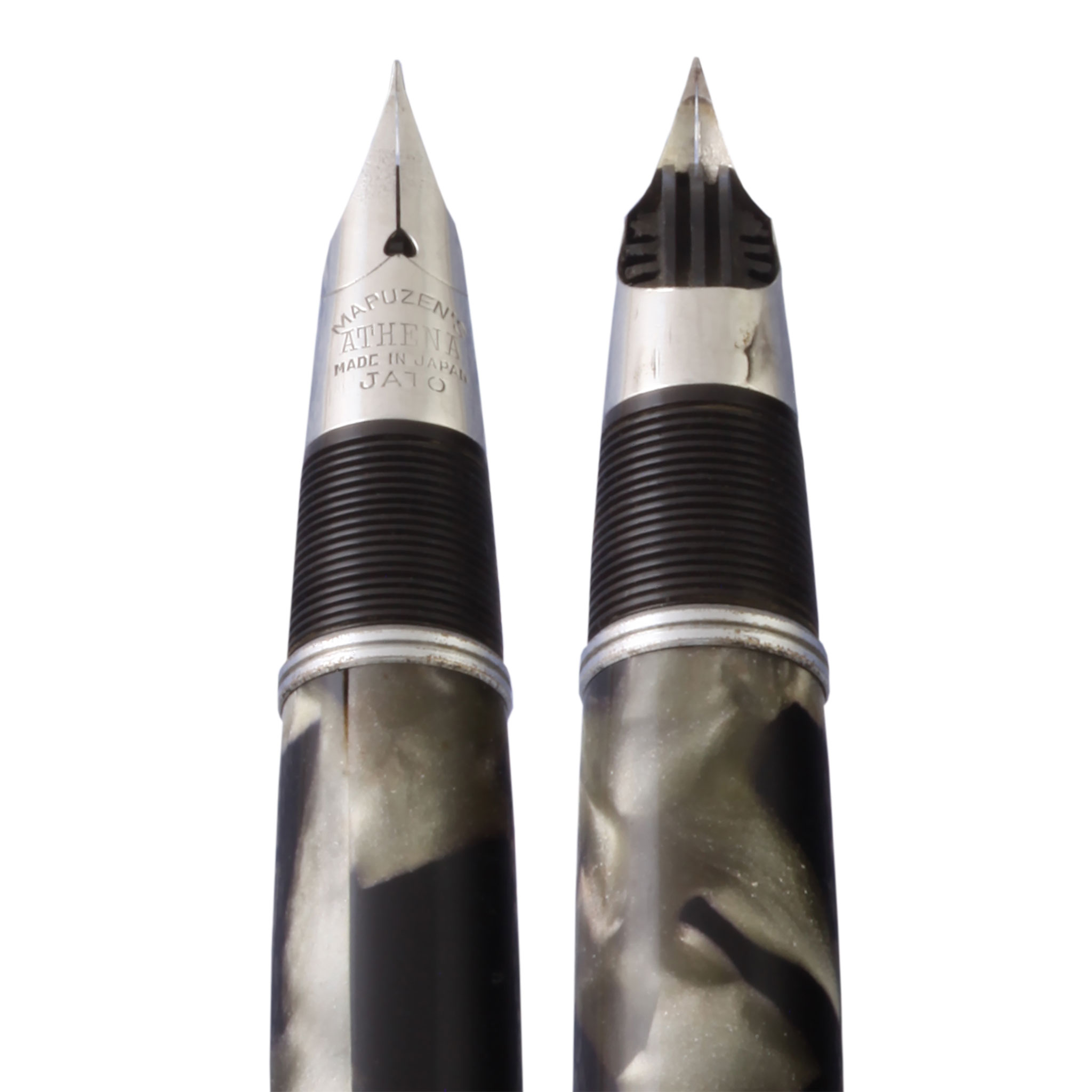 Maruzen stainless steel conical nib, front and back view
Maruzen stainless steel conical nib, front and back view
I’ve seen one nib example stamped Special over S.K. in an oval over Iridium over Pen. This is likely an unbranded nib made by Kawakami-Seisakusho instead of the usual ones customized for Maruzen. Because Maruzen was making cheap plated nib pens after the war and prior to 1950 and they then changed to Kawakami-Seisakusho making their nibs about 1950, that leads me to date the pens in this article c. 1950-1952.
Since there is almost no primary information available on these pens, there will be no Identification guide and features section. The pens will be described based on observation of known examples as follows. Because all of the pens here are nearly unused, there won’t be a full Performance section, as I am reluctant to ink any of them.
A Gallery of Conical Nib Maruzen Athena Pens
Balance Shape Athena
The Maruzen Athena “balance” shape lever fill fountain pen came in two sizes, with the larger about 5 1/8 inches long with the cap on and the smaller being about 4 13/16 inches. These pens strongly resemble the rounded, cigar shaped Sheaffer Triumph pens of the mid 1940s, c. 1945-1948, very possibly copying the design from pens brought over by Americans stationed in Japan after World War II. They feature a conical stainless steel nib with a ribbed grip section. The nibs are stamped MARUZEN’S over ATHENA over MADE IN JAPAN over JATO. Unlike the Sheaffer pens, the cap pulls off. The clip is stamped ATHENA. The barrel is stamped “Athena” over MARUZEN over MADE IN JAPAN.
- Celluloid or resin cap and barrel in the following observed colors: black, burgundy, translucent burgundy, translucent green, black and gray/green marble, green marble, and green crosshatch
- Clip is stamped ATHENA
- Trim is either polished stainless steel, or chrome or nickel plated
- Two cap bands, top one wider and bottom one narrower
- Stainless steel conical nib stamped MARUZEN’S over ATHENA over MADE IN JAPAN over JATO
- Available nib grades not known but probably extra fine, fine, medium, broad, and stub as with model AS9
- Available nib grades unknown
- Lever filler
- Two sizes: 5 1/8 inches capped – price 450 yen, 4 13/16 inches – price 350 yen
- Not known if matching pencils were made
Balance Shape Athena, larger size
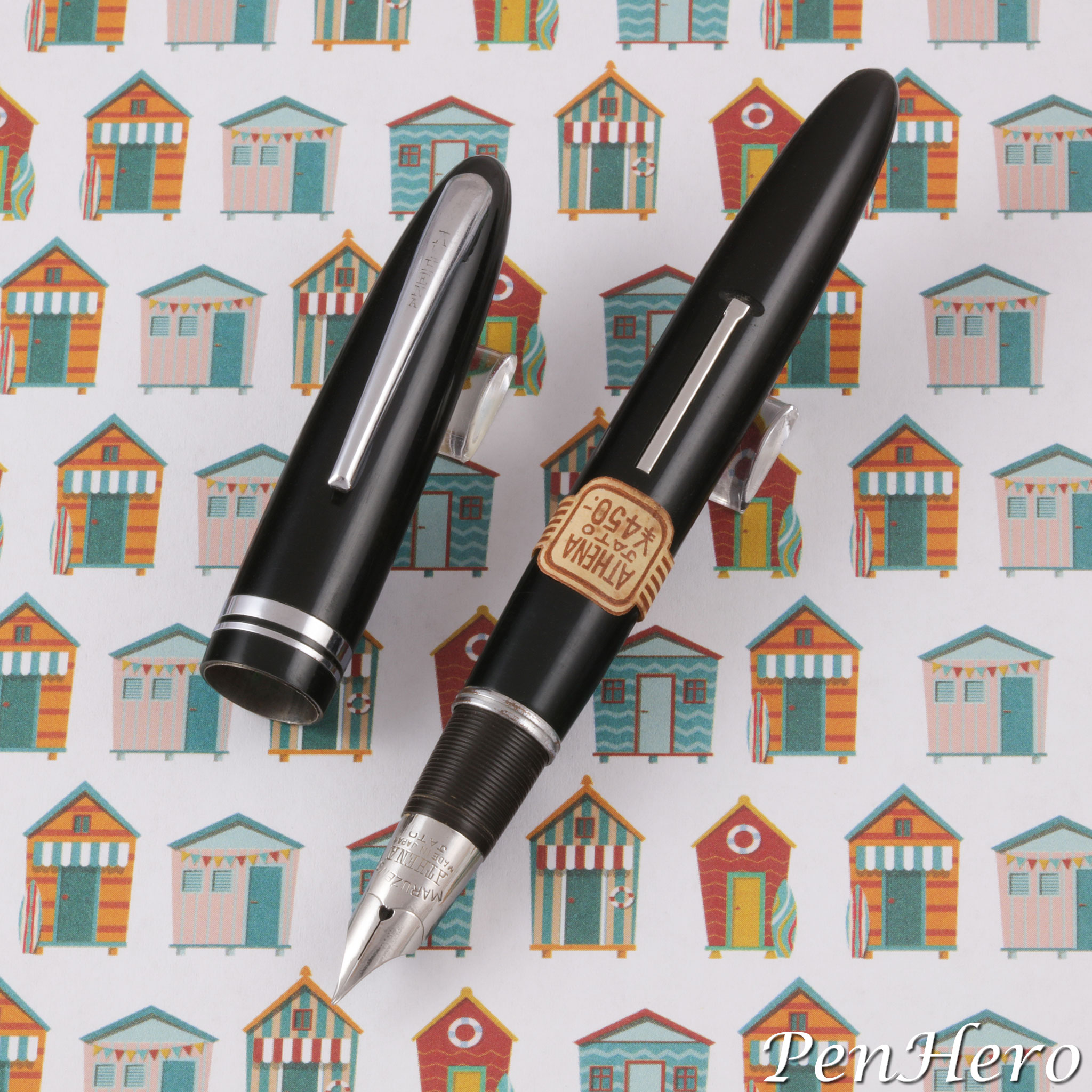
Maruzen Athena "Balance Shape" fountain pen, large size in black c. 1950-52. This 5 1/8 inch pen has a paper band showing a price of 450 yen.
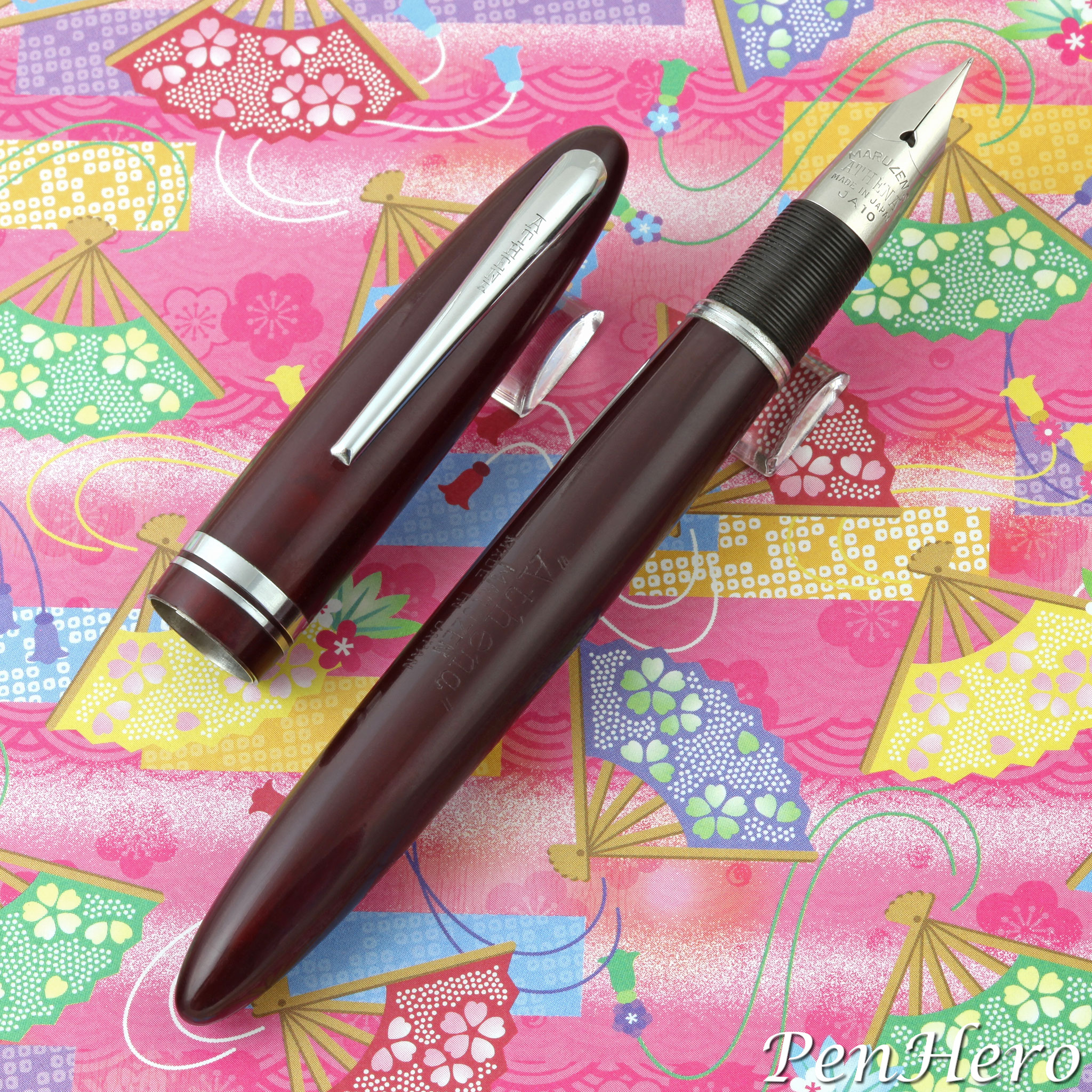
Maruzen Athena "Balance Shape" fountain pen, large size in burgundy plastic c. 1950-52.
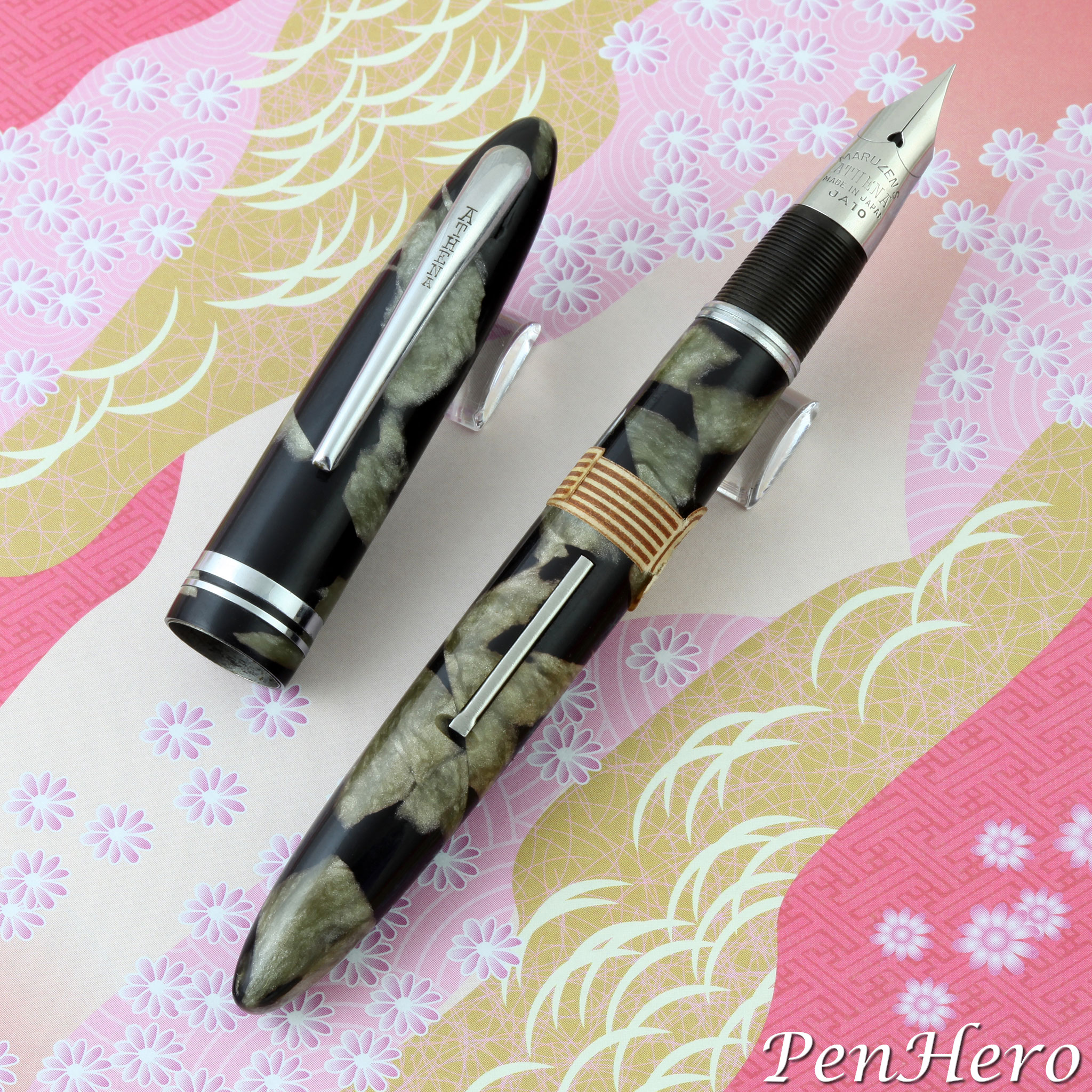
Maruzen Athena "Balance Shape" fountain pen, large size in green and black marbled celluloid c. 1950-52. The cap and barrel are made from tubes formed from spiral strips of the material. The seams can be seen. This 5 1/8 inch pen has a paper band showing a price of 450 yen.
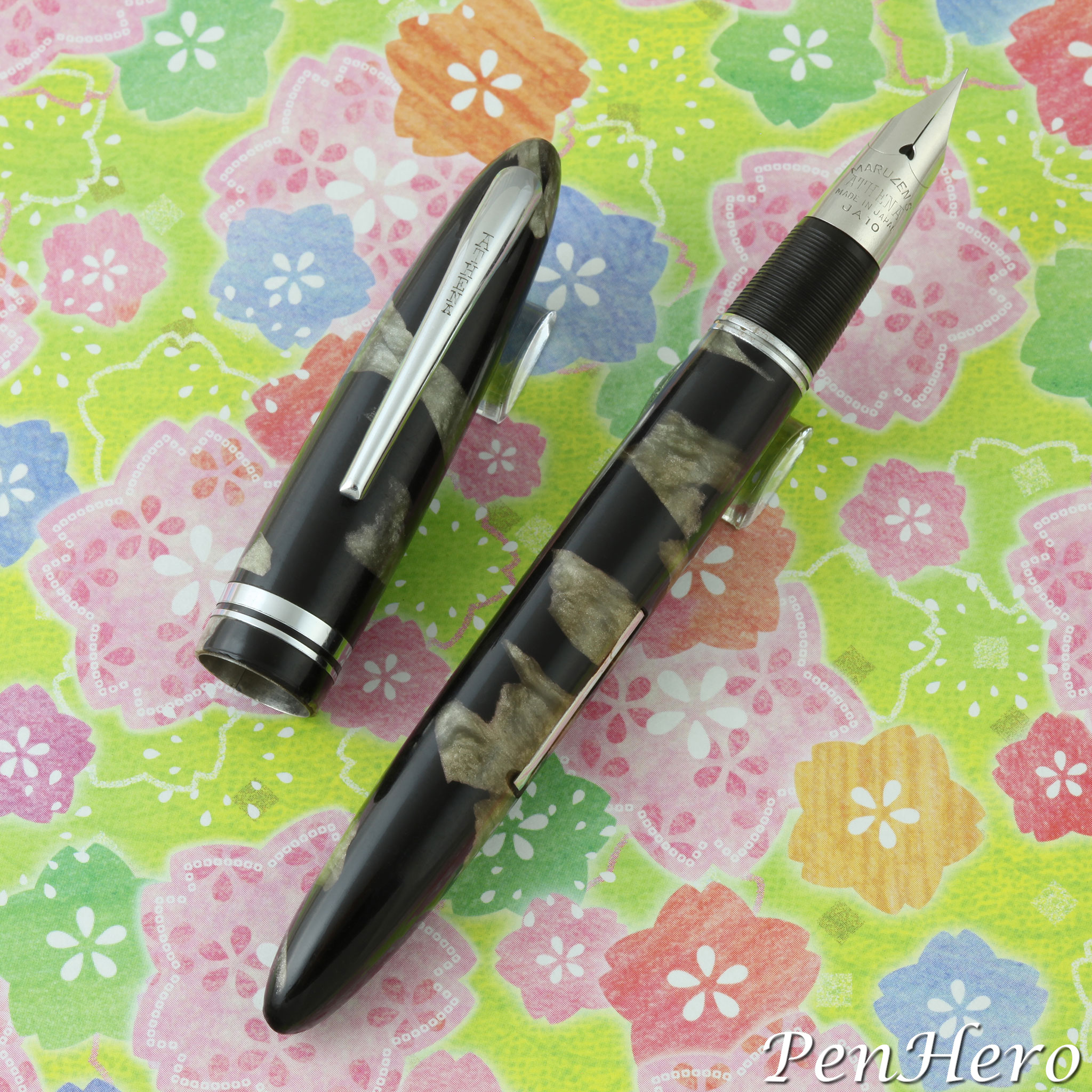
Maruzen Athena "Balance Shape" fountain pen, large size in green and black marbled celluloid c. 1950-52.
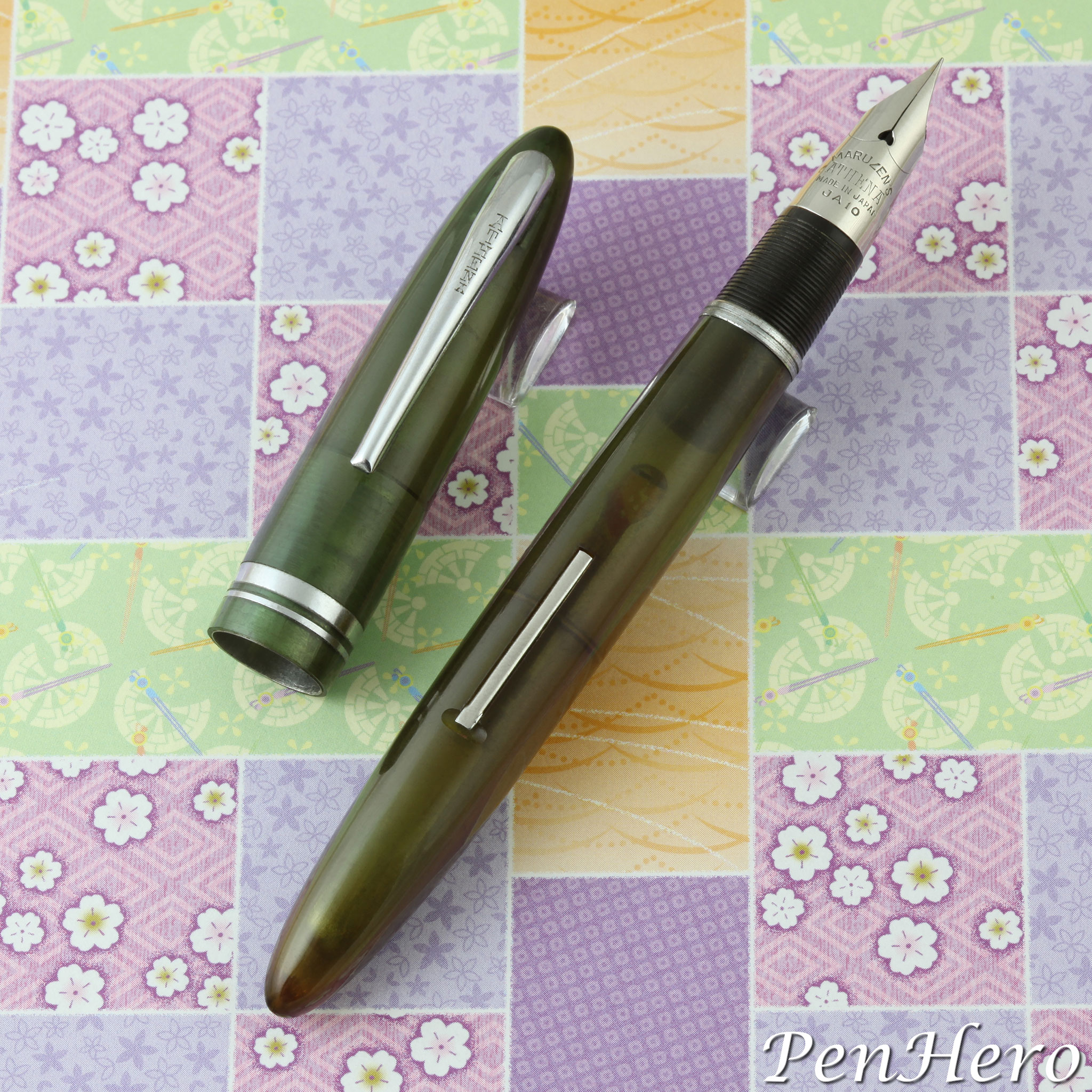
Maruzen Athena "Balance Shape" fountain pen, large size in green translucent plastic c. 1950-52.
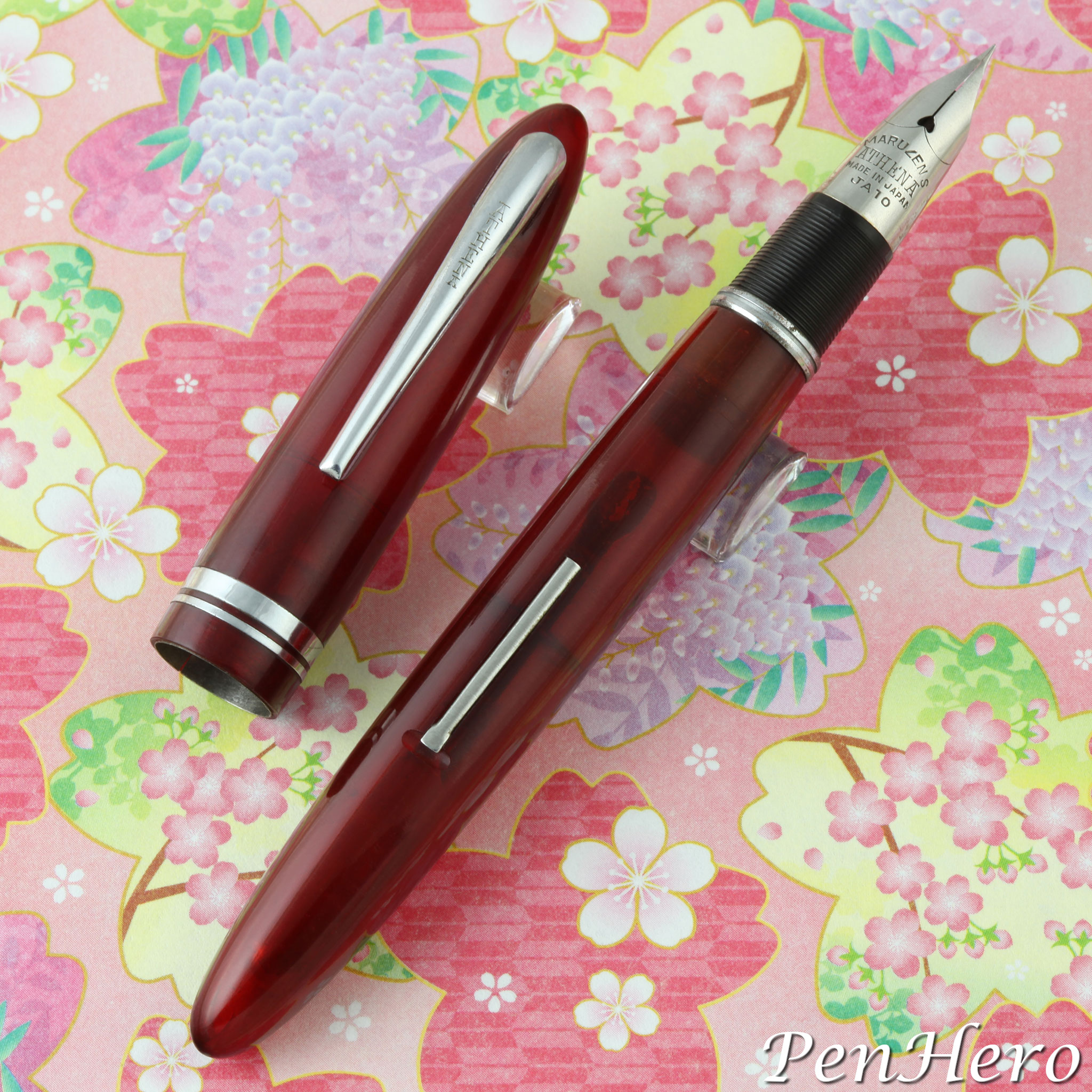
Maruzen Athena "Balance Shape" fountain pen, large size in burgundy translucent plastic c. 1950-52.
Balance Shape Athena, smaller size
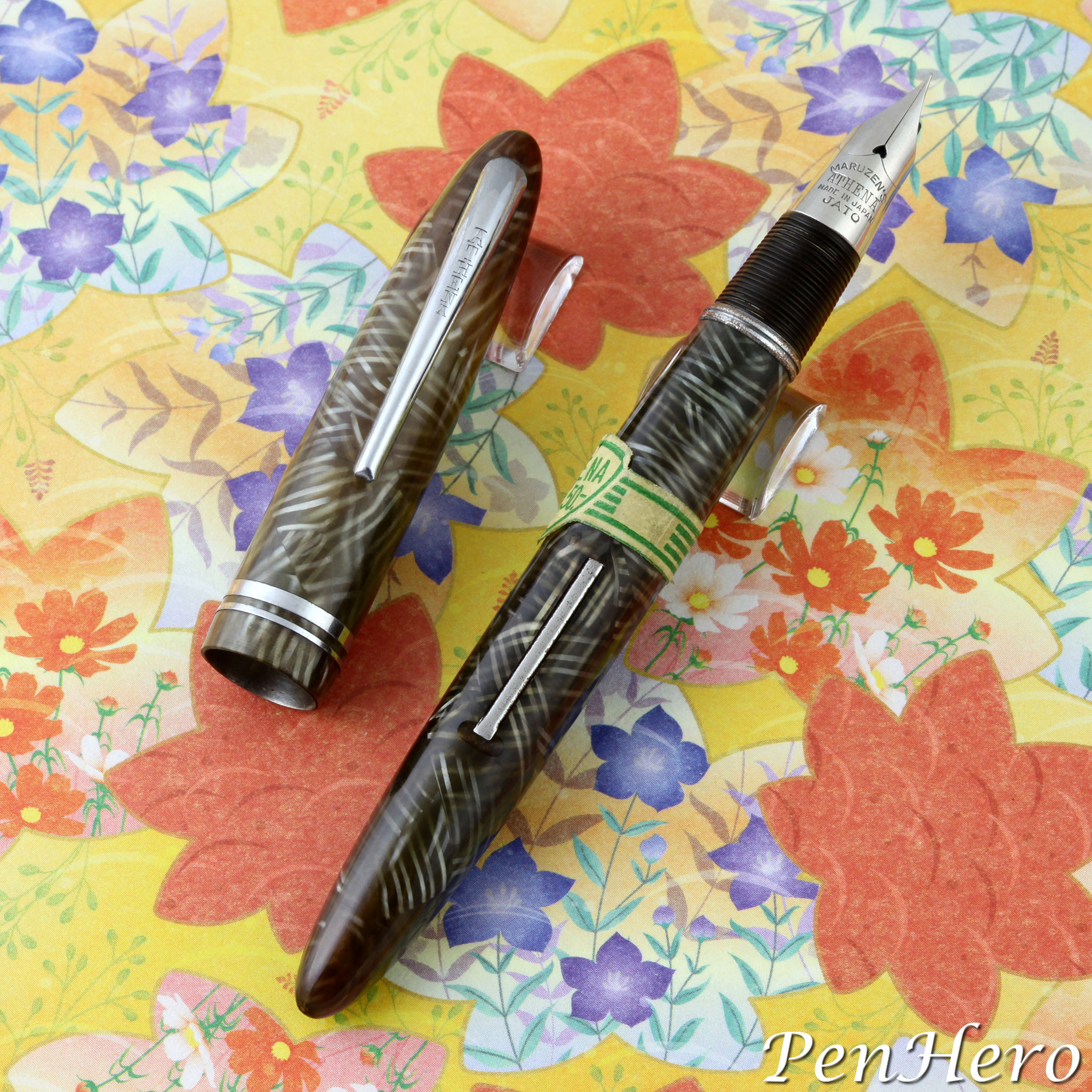
Maruzen Athena "Balance Shape" fountain pen, small size in green crosshatch celluloid c. 1950-52. The material is similar to Conklin's celluloid they named etched. It may be a three ply sheet with a base color layer, a layer of threaded material that creates the crosshatch pattern and a top clear layer that is formed into a spiral wrap that creates the cap and barrel tubes. The spiral seams are visible. Sheaffer used a similar patented celluloid made by the Celluloid Corporation of New Jersey on their early WASP Clipper pens. The paper band shows a price of 350 yen.
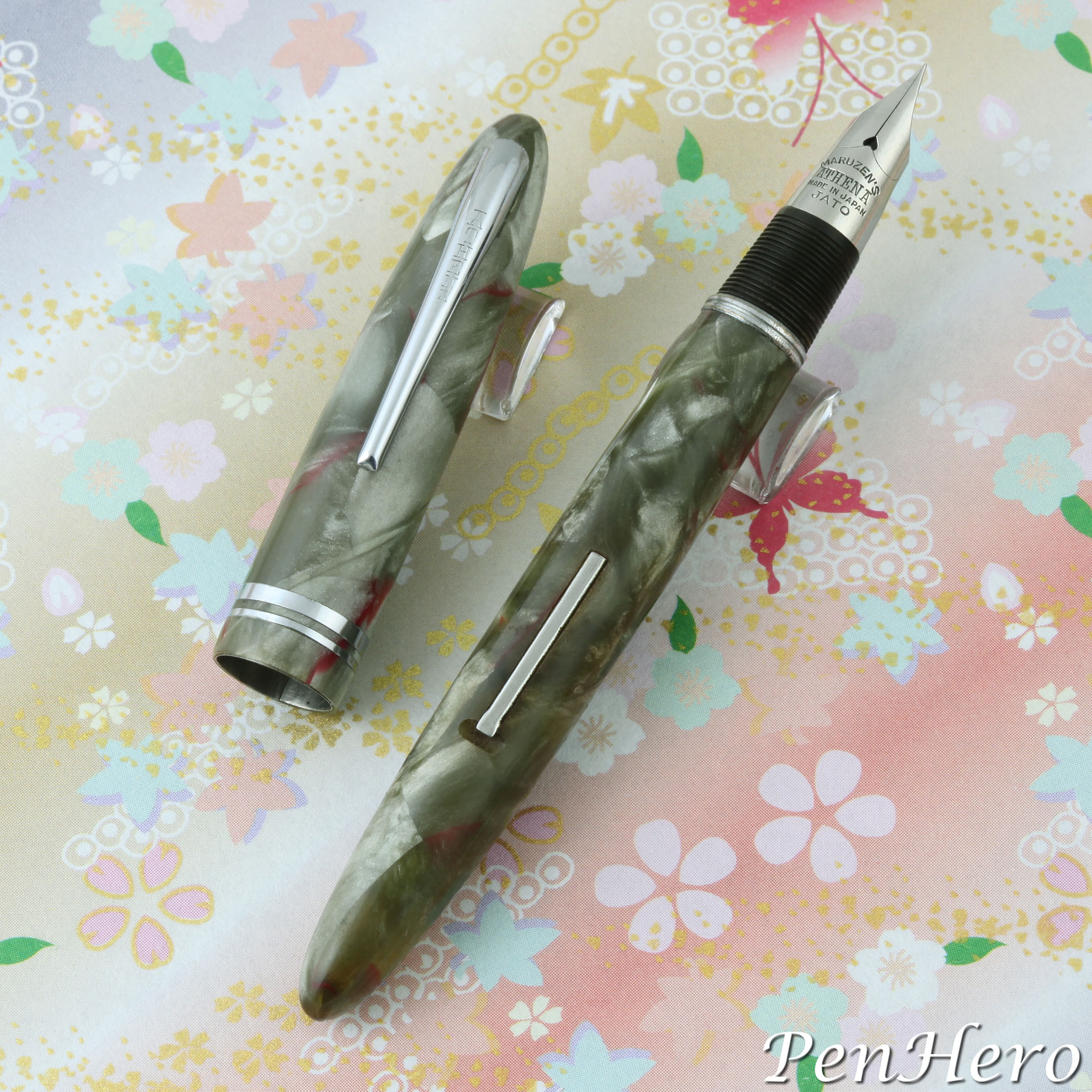
Maruzen Athena "Balance Shape" fountain pen, small size in green marbled celluloid c. 1950-52. The celluloid is a sheet that is formed into a spiral wrap that creates the cap and barrel tubes. The spiral seams are visible.
Tapered Shape Athena
The Maruzen Athena “tapered” shape lever fill fountain pen also came in two sizes, with the larger about 5 1/16 inches long with the cap on and the smaller being about 4 3/4 inches. These pens have a resemblance to the Parker Duofold pens of the mid 1940s, also likely inspired by pens brought over by Americans stationed in Japan after World War II. They also feature a conical stainless steel nib with a ribbed grip section. The nibs are stamped MARUZEN’S over ATHENA over MADE IN JAPAN over JATO. Unlike the Parker pens, the cap pulls off and the section is ribbed. The clip is stamped ATHENA. The barrel is stamped “Athena” over MARUZEN over MADE IN JAPAN.
- Celluloid cap and barrel in the following observed colors: black and green marble, black and gray marble, brown marble, and translucent burgundy
- Clip is stamped ATHENA
- Trim is either polished stainless steel, or chrome or nickel plated
- Two cap bands, top one wider and bottom one narrower
- Stainless steel conical nib stamped MARUZEN’S over ATHENA over MADE IN JAPAN over JATO
- Available nib grades not known but probably extra fine, fine, medium, broad, and stub as with model AS9
- Available nib grades unknown
- Lever filler
- Two sizes: 5 1/16 inches capped – price 400 yen, 4 ¾ inches - price 450 or 350 yen
- Not known if matching pencils were made
Tapered Shape Athena, larger size
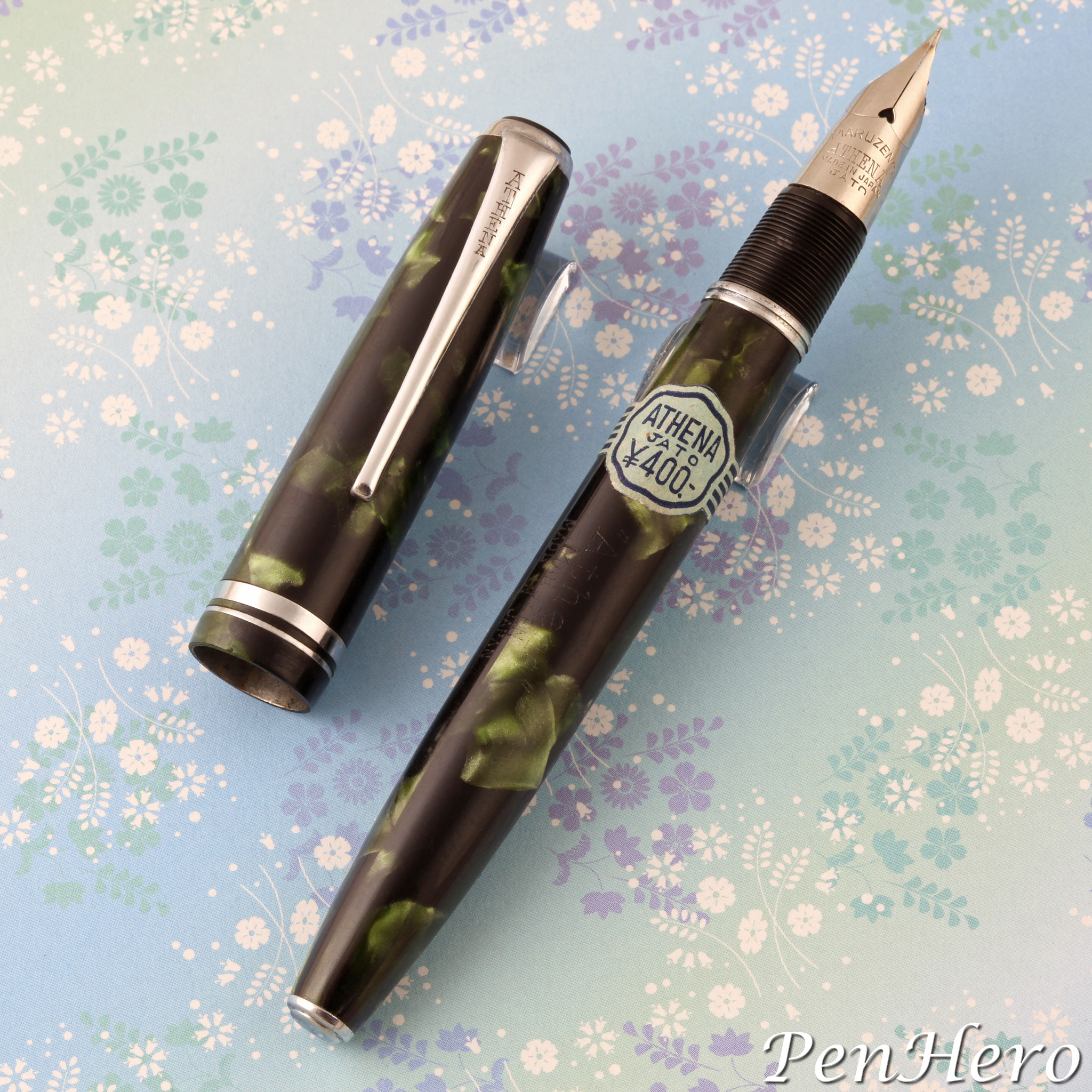
Maruzen Athena "Tapered Shape" fountain pen, large size in a green and black marbled celluloid c. 1950-52. The cap top jewel is black. The metal barrel end cap is chrome plated. The paper band shows a price of 400 yen.
Tapered Shape Athena, smaller size
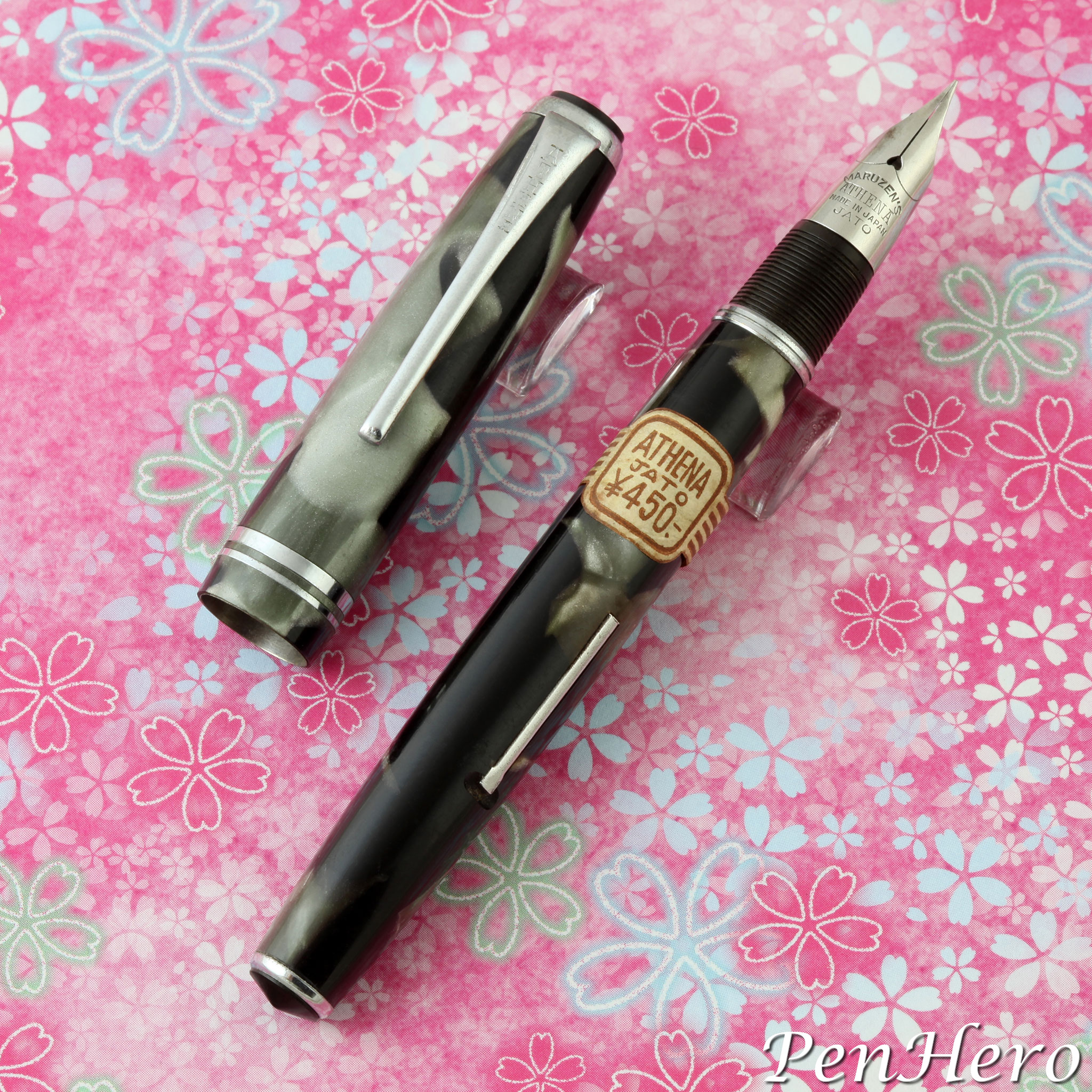
Maruzen Athena "Tapered Shape" fountain pen, small size in green and black marbled celluloid c. 1950-52. The cap top and barrel end jewels are black. The paper band shows a price of 450 yen.
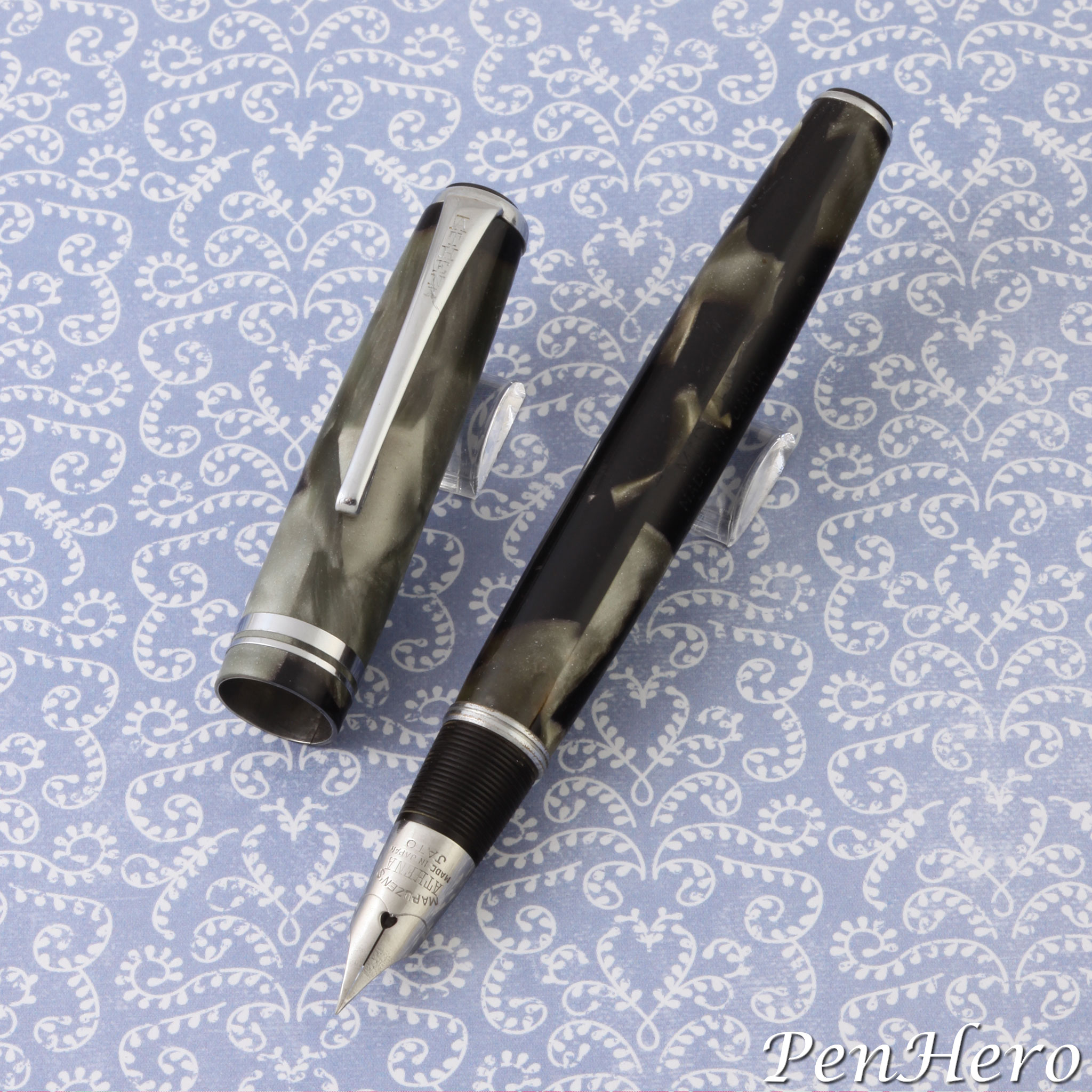
Maruzen Athena "Tapered Shape" fountain pen, small size in a green and black marbled celluloid c. 1950-52. The celluloid appears to be made from a sheet that was formed into a tube, leaving a visible seam. The cap top and barrel end jewels are black.
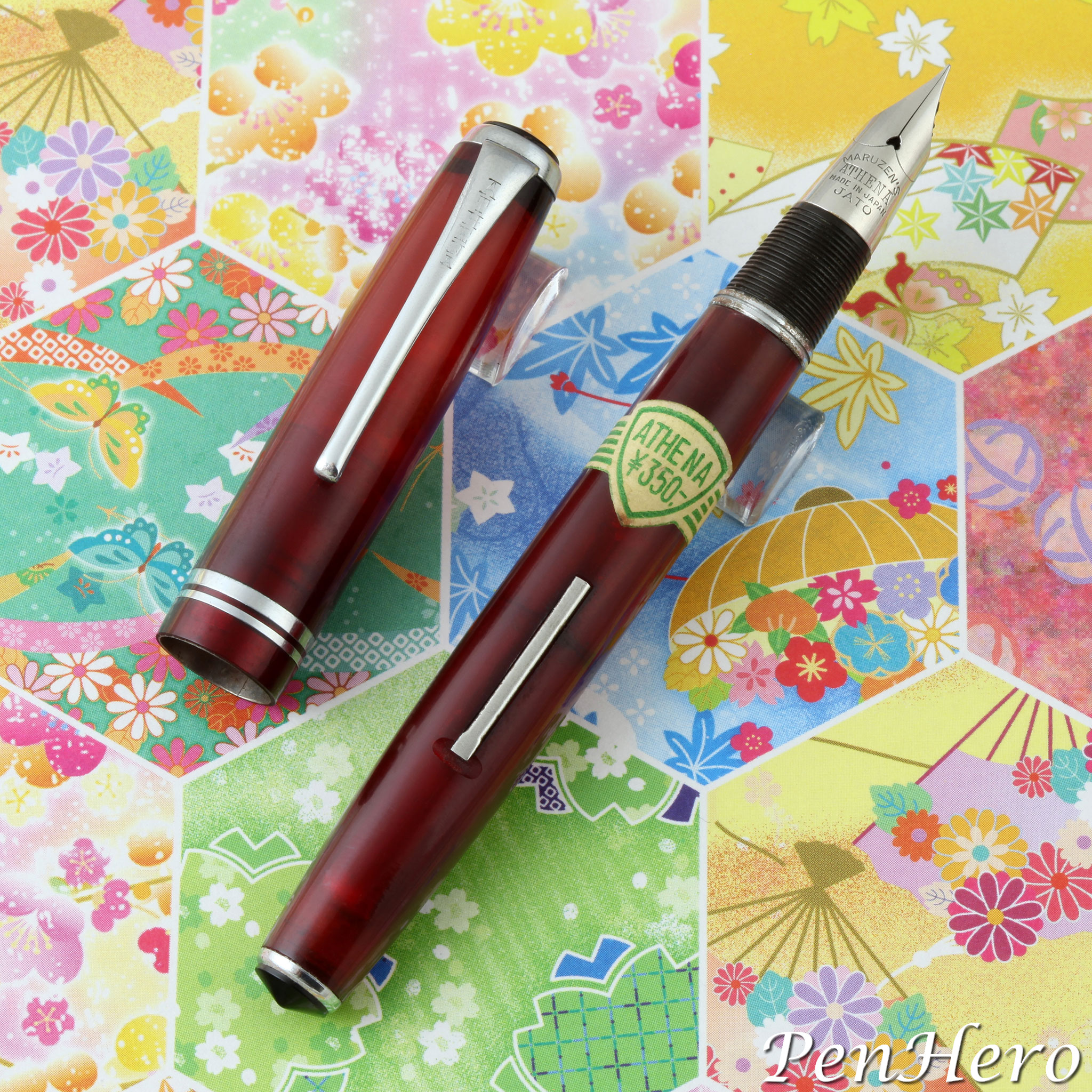
Maruzen Athena "Tapered Shape" fountain pen, small size in translucent red plastic c. 1950-52. The paper band shows a price of 350 yen.
Acknowledgements
Thanks to Stan Klemanowicz for pointing out that Maruzen was not unique in marketing pens with conical nibs and identifying other brands with them.
References
"150 Years of Maruzen" Crónicas Estilográficas, 12 March 2019, © Copyright 2010-2024 Bruno Taut
"Chronology" fountainpen.it
"Does Japan owe one of its favorite foods to a bookstore owner? Trying the “original” Hayashi rice" by Dale Roll, October 21, 2023, © SoraNews24 Japan News
Fountain Pens of Japan, by Andreas Lambrou and Masamichi Sunami, © 2012 Andreas Lambrou Publishers, Epping, Essex, United Kingdom, pages 28, 96,138-142
"History of Maruzen-Yushodo" © Maruzen Yushodo
"Maruzen" fountainpen.it
"Maruzen, after the war, Triumph" March 05, 2021
"Maruzen Marunouchi Main Store" by Chris Rowthorn, Copyright © 2015–2024, trulytokyo.com
"OVERVIEW Maruzen" Copyright © 2024, Oxford University Press
Interact
Comments on this article may be sent to the author, Jim Mamoulides


